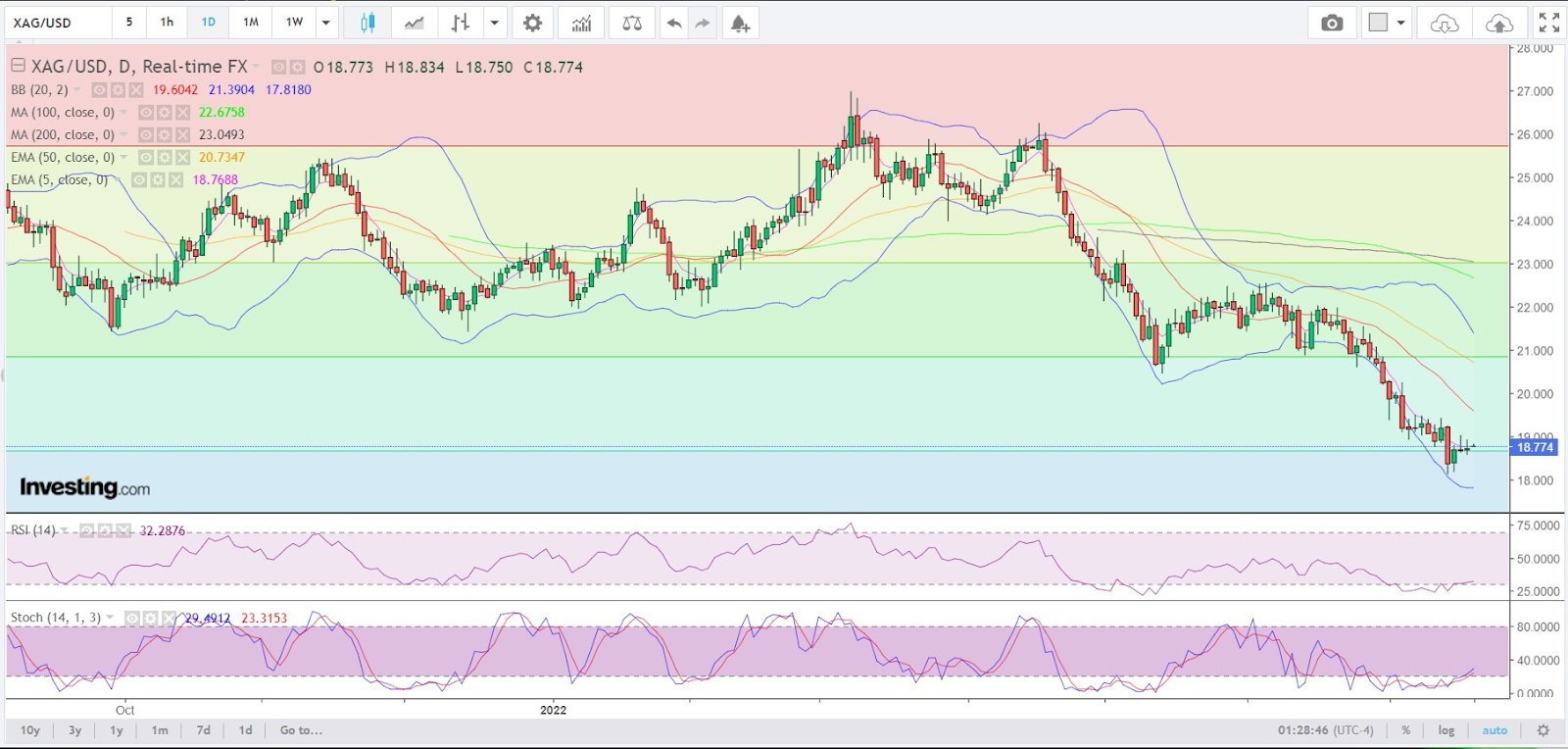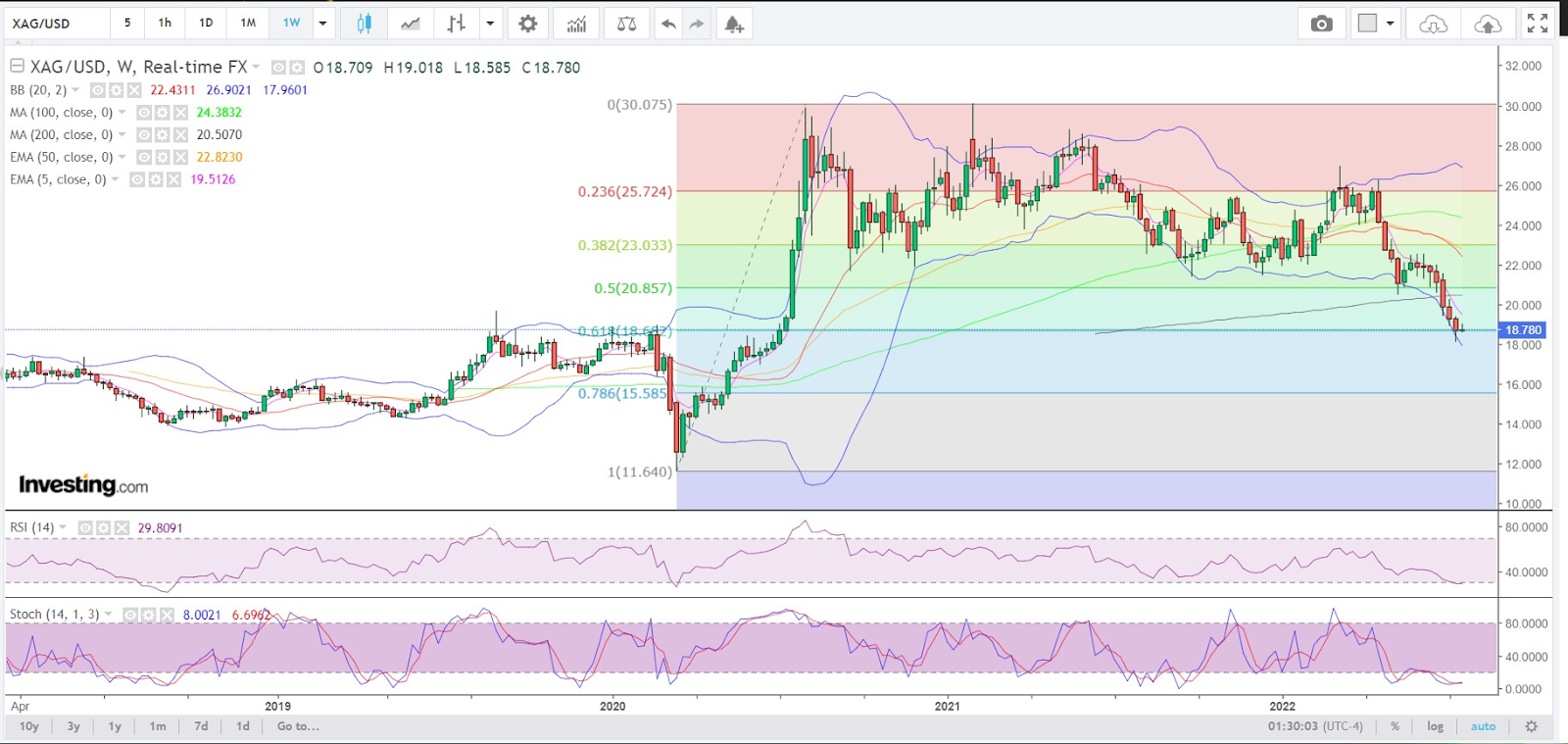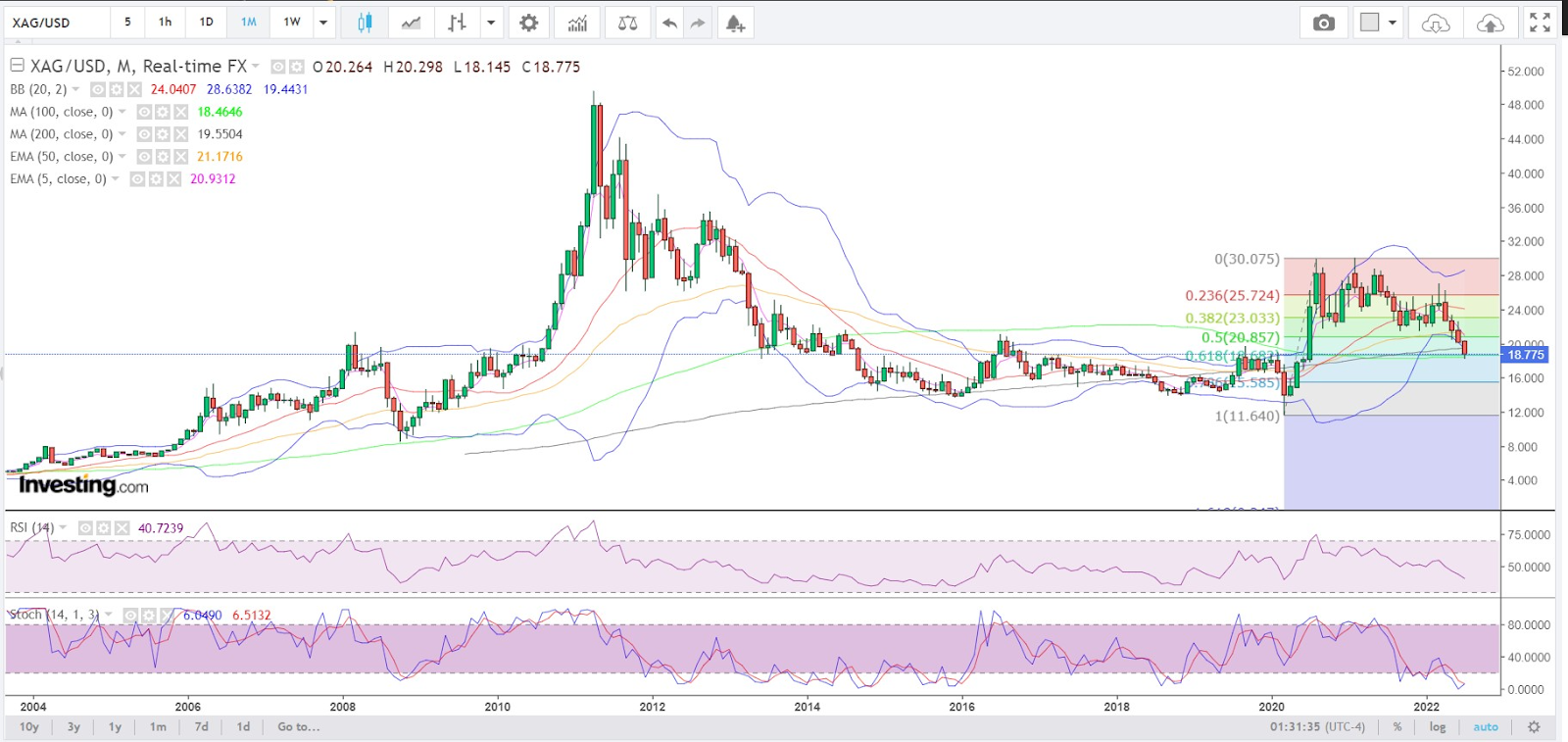- Spot silver hit a 2-year low of $18.132 on July 14
- Silver also in bear market, losing 20% on the year
- Charts suggest a turnaround from here to $19 and, eventually, $20
After almost four months in the red, silver has had its worst crash since the pandemic, hitting a two-year low in the $18-an-ounce range on July 14.
But is that the bottom?
Charts for the spot price of silver suggest it may be for now, with longs eyeing a return to $19 and, eventually, $20.

Charts by skcharting.com with data powered by Investing.com
But silver’s plunge into a bear market—compared with the drop of just 7% in gold—also raises questions on how the relative fortunes of the two have gapped this much when they are usually just a few percent apart.
Since its March peak of above $26 an ounce that came on the back of the big commodities rally triggered by Russia’s invasion of Ukraine, silver has slid steadily each month; losing 8% in April; 5% in May; 6% in June, and 7% so far for July.
Uncertainty in industrial demand for silver amid growing fears of a recession in the United States is responsible for much of that.
More than 50% of silver’s demand originates from industrial use. As a malleable metal, it is just as good as gold for jewelry making. It is also a good conductor of electricity and used extensively in the manufacture of electronics components.
The transition to clean energy had also been expected to drive physical demand for silver, particularly for connections in electric vehicles and for components within solar panels. The rollout of fifth generation (5G) telecom networks was seen as another substantial source of demand.
But last week’s tumble to a July 2020 low of $18.132 for spot silver also came on the back of a two-decade high in the dollar, which acts as contrarian trade to most precious metals, particularly gold.

The dollar has been on a tear over the past year as the Federal Reserve embarks on its most aggressive rate hikes in a generation to tame inflation raging at 40-year highs due to trillions of dollars of aid and other stimulus extended during the pandemic.
The Dollar Index, pitted against six major currencies, has declined in just three of the past 12 months and is up more than 11% this year.
Gold hit a 11-month low of $1,695 last week, responding to the runaway dollar, which has just started retreating in the past three sessions.
Silver’s prior high before the Ukraine war was $30.075, reached on Feb 1, 2021.
Markets chartist Christian Valencia said in a blog on FXStreet that spot silver was still in a downward bias, though the Relative Strength Index at 31 had exited oversold conditions and could open the door for a test of $19.40.
“However, silver traders would first need to reclaim $19 if they aim to increase prices.”
Michael Boutros, who blogs on precious metals at DailyFX, said rallies in silver should be capped by a monthly open at $20.28.

Sunil Kumar Dixit, chief technical strategist at skcharting.com, said silver on its present track might not dip beyond $17.90.
He added:
“The positive side of straight seven weeks of a correctional wave is that silver is in oversold conditions with weekly stochastic readings of 7/6 and monthly stochastic readings of 6/6 that call for a technical rebound in the near term.”
He said a weekly close above the 5-week Exponential Moving Average of $19.50 should set up a target for the 200-week Simple Moving Average of $20.50 and eventual demand zones at $21.40-$21.60.
“Beyond these, robust industrial demand would help lift silver over this obstacle zone for higher targets at the 50-week EMA of $22.80.”
Disclaimer: Barani Krishnan uses a range of views outside his own to bring diversity to his analysis of any market. For neutrality, he sometimes presents contrarian views and market variables. He does not hold a position in the commodities and securities he writes about.
